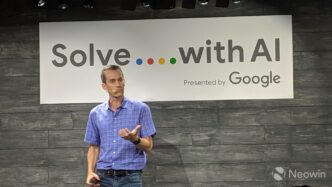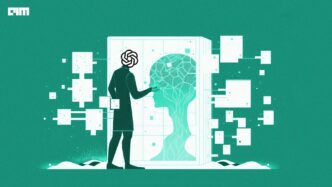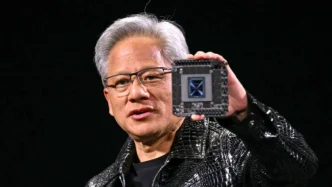Large language models (LLMs) like GPT have taken center stage in the AI revolution, showcasing their ability to solve problems with near-human logic. Originally built for natural language processing, these models now excel at complex reasoning tasks. But there’s a problem: they demand huge computing power, making them expensive and hard to use on mobile or edge devices. That’s where small reasoning models come in—compact, powerful alternatives designed to deliver similar intelligence with far fewer resources.
Why the Industry Is Shifting Toward Smaller Models
For years, AI development followed the “bigger is better” rule, scaling models with more data and compute to boost performance. While this strategy delivered powerful results, it also created bottlenecks. Massive models are costly to train, slow to deploy, and unsustainable at scale. But many real-world applications—think mobile apps, healthcare tools, or personalized education—don’t need that scale. What they need is smart, step-by-step reasoning packaged in a lightweight, responsive model.
What Reasoning Really Means in AI
Reasoning in AI is more than fetching the right answer. It’s about connecting ideas, recognizing patterns, and planning logical steps to reach a conclusion. For language models, that means moving beyond simple responses to structured, multi-step thought processes. While GPT-style models excel at this, they require extensive fine-tuning and processing power. That’s why creating efficient models that can reason well—without all the overhead—is such a hot topic.
How Small Reasoning Models Work
To mirror the intelligence of large models, small reasoning models rely on a clever technique called knowledge distillation. Here, a smaller “student” model learns from a larger “teacher” model by training on its output. This way, the student absorbs reasoning strategies without needing a massive architecture. Some models also use reinforcement learning with task-specific rewards to boost logic skills in specific domains like math or programming.
DeepSeek-R1: A Breakthrough in Compact AI
One of the best examples of small reasoning model success is DeepSeek-R1. Despite being trained on older GPUs and fewer resources, it achieved performance close to, and in some cases better than, much larger models like OpenAI’s o1. It even ranked highly on key benchmarks like MMLU and GSM-8K.
The key to its success? A novel training method that skipped early supervised fine-tuning and instead leaned on reinforcement learning. DeepSeek-R1-Zero, a follow-up version, took this further by improving coherence and execution in tasks like coding and advanced math.
Distilled Models Deliver Big Results on Small Footprints
Through distillation, DeepSeek has released a range of efficient models from just 1.5B to 70B parameters. One standout, DeepSeek-R1-Distill-Qwen-32B, even outperformed o1-mini on several tasks. These smaller models are optimized to run on everyday hardware, making them ideal for startups, educators, or developers with limited infrastructure.
Can Small Reasoning Models Compete with GPT?
On performance benchmarks, the results speak for themselves. DeepSeek-R1 scored 0.844 on MMLU—matching larger peers. On GSM-8K, a grade-school math benchmark, its distilled version outpaced both o1 and o1-mini. In coding challenges like CodeForces and LiveCodeBench, these models also held their own against GPT-4o, showing real capability in reasoning-heavy programming tasks.
Still, challenges remain. Small models struggle with tasks needing long memory or deep understanding across varied subjects. For example, in chess simulations, DeepSeek-R1 made more mistakes than larger models over extended reasoning periods. They also currently lack the multimodal abilities (like image processing) found in models such as GPT-4o.
Real-World Impact: Why Small Models Matter
Even with trade-offs, small reasoning models offer serious advantages. They use less power, cost less to run, and are easier to deploy. DeepSeek-R1 is up to 96% cheaper to operate than larger counterparts like o1. That’s a game-changer for developers building AI for mobile apps, IoT devices, or offline platforms.
Their impact spans multiple industries. In healthcare, compact models can power diagnostic tools that work on existing hospital servers. In education, they enable adaptive learning platforms that give personalized, logical feedback. In science, they can help researchers crunch data and test ideas—all without relying on supercomputers. Their open-source availability also democratizes AI, letting smaller teams access cutting-edge reasoning power.
The Bottom Line: Smarter AI Doesn’t Have to Be Bigger
Small reasoning models represent a crucial shift in how we think about artificial intelligence. They may not match every capability of massive LLMs like GPT-4o, but they strike a valuable balance—offering speed, affordability, and smart reasoning in a compact form. As research pushes these models even further, expect to see them power a wide range of tools—from healthcare to education to scientific discovery. The future of efficient AI isn’t on the horizon. It’s already here.













